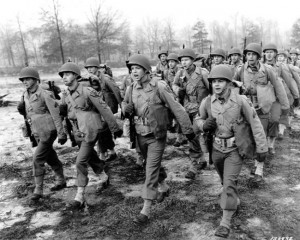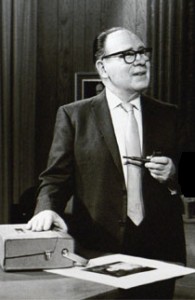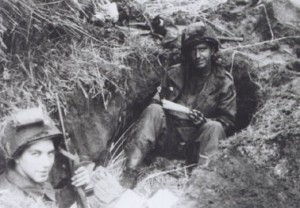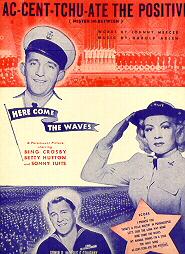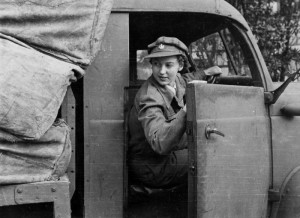By 1942 the United States found itself ramping up to fight a war that stretched from North Africa and Europe to the South Pacific. Morale among allied soldiers would be a major issue. But the five foot three inch tall Army Lieutenant G. Robert Vincent thought he had the answer. He decided that music—and lots of it—would make a difference. As he put it his V-Discs would be like sending a "slice of America to the boys overseas."
The Army’s V-Disc project provided a monthly 'care' package of music specially recorded for troops overseas. Soldiers fighting a far-flung war welcomed these musical snapshots of life back home.
Vincent and his team recorded a wide array of musical genres for the troops. The monthly disc shipments featured selections from patriotic marches, symphonic and chamber works, Grand Ol' Opry stars, black gospel groups, pop songsters like Bing Crosby and Dinah Shore, and plenty of hot jazz by Fats Waller, Lionel Hampton, Nat Cole, Louis Armstrong, Muggsy Spanier, Bob Crosby, Gene Krupa, Benny Goodman, the Dorsey Brothers, Hot Lips Page, Teddy Wilson, Jimmie Lunceford, Artie Shaw, Jack Teagarden, Bobby Hackett, Duke Ellington and Count Basie.
The V-Disc project was, from its inception, intended to be not-for-profit. Celebrities lined up to do their bit in the recording studio. And no one, no matter how big a star, received any compensation. Songwriters signed on to the same deal. In return the Army promised that 'no commercial use' would ever be made of V-Discs.
The body of work Vincent and his team captured on V-Discs created a treasury of jazz. By special arrangement with the American Federation of Musicians (which was at the time on strike, effectively halting production of new commercial discs) there were no contractual restraints from record labels. V-Disc sessions often brought together top artists who would not normally record together in high-energy jam sessions.
New technology developed by the Army meant that individual tracks on the 12-inch 78 RPM discs could be as long as 6 minutes instead of the usual 3. Musicians could stretch out and take longer solos. In general, V-Discs projected a more informal relaxed party atmosphere.
V-Discs were sent out to the four corners of the Earth and were an instant hit. They were broadcast over PA systems on battleships at sea and in Quonset-hut ‘day rooms’ where enlisted men, waiting for orders, played cards and wrote letters home. Soldiers passing the time in barracks or lining up in mess halls listened to V-Discs on camp radio stations. In all between 1943 and 1949 some eight million V-Discs were shipped overseas.
For G. Robert Vincent, feedback from the troops was always very important:
"I enclosed a personal message into each V-Disc kit, I said 'Let us know what you want in the line of music, let us know your criticism of this month’s release, let’s hear from you.' And soon replies kept pouring in...We wanted to diversify things as much as possible because every GI had different taste."
It took four enlisted women working full time to tabulate the thousands of song requests that came back from the front. Irving Berlin's "White Christmas" topped the list, but "Star Dust" was a close runner-up—and V-Disc producers gave the troops half a dozen recordings to choose from. There were performances by Artie Shaw, Glenn Miller and the composer himself—Hoagy Carmichael.
At the end of the war the master recording discs were destroyed. But copies of most of the V-Discs survived, and bootleg copies have circled the globe for decades. Many are available today on CD re-issues.
Photo credit for Home Page: WWII GIs enjoying a V-disc package. Photo courtesy lionelhampton.nl
Text based on Riverwalk Jazz script by Margaret Moos Pick ©2012


